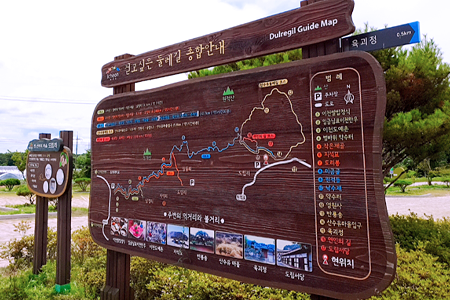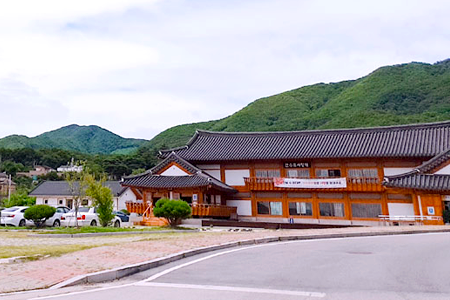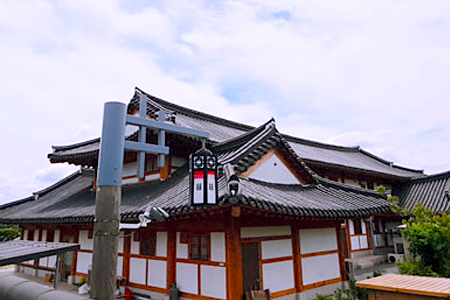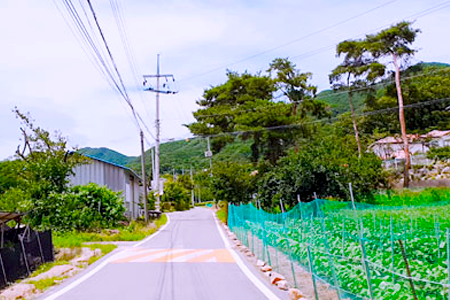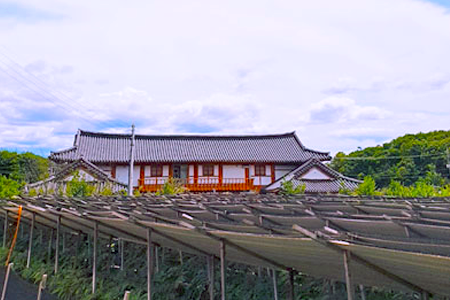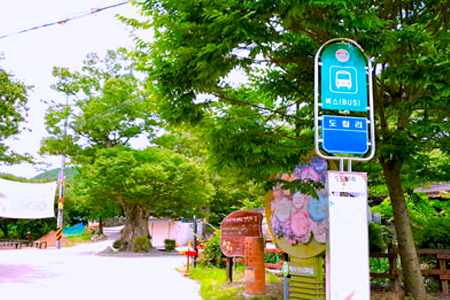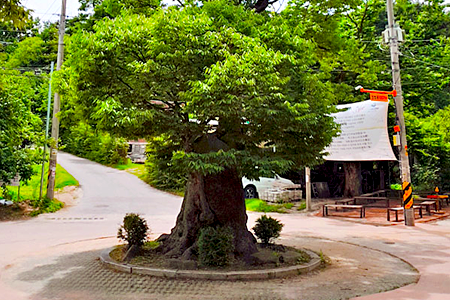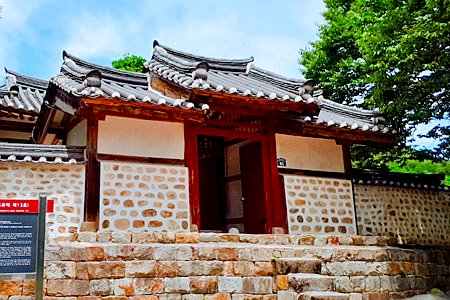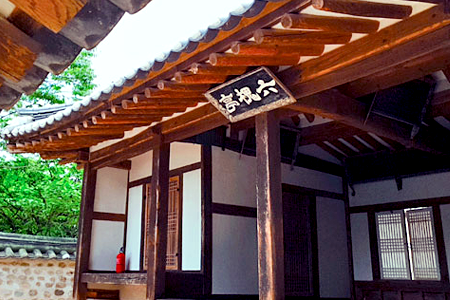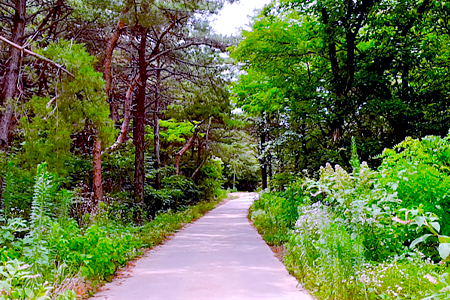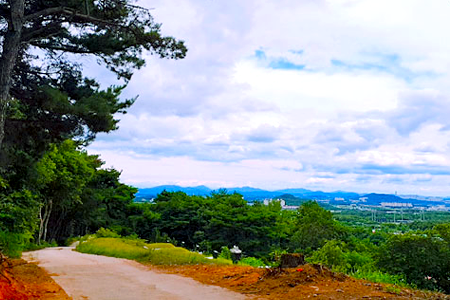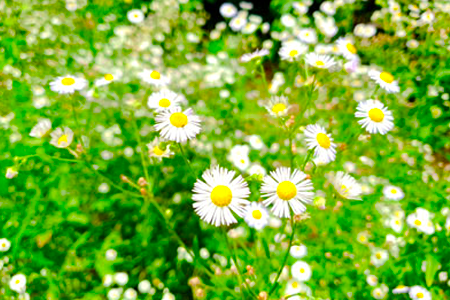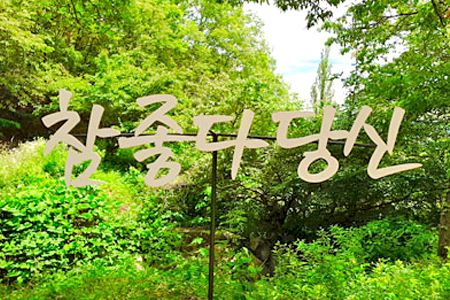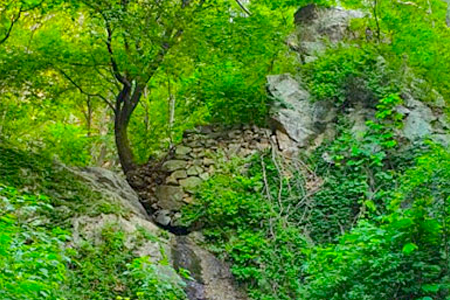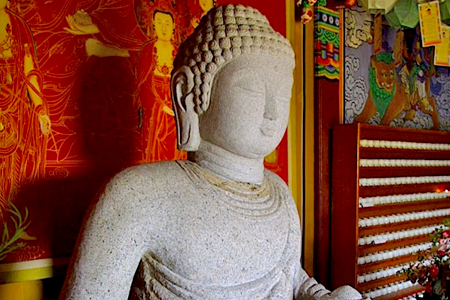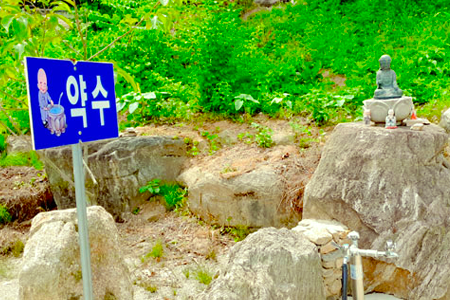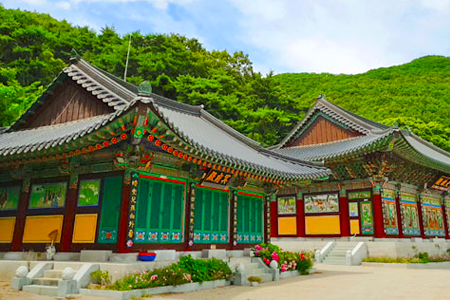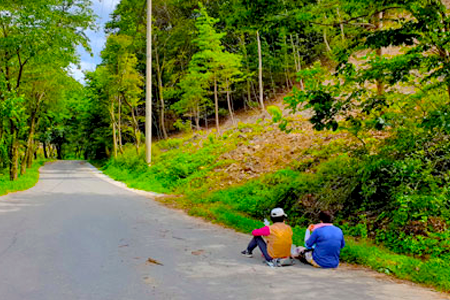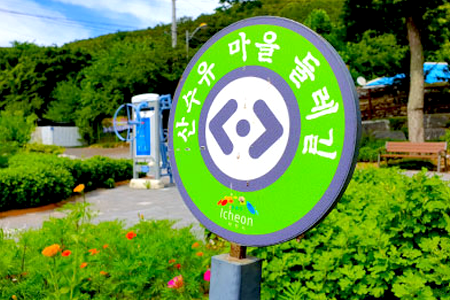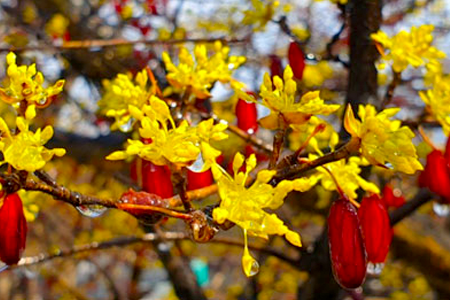Along the Sansuyu Trail
Icheon Sansuyu Trail
If you suddenly feel stifled by the cement buildings that surround you,
If you suddenly feel foreign to the asphalt floor you are standing on,
If you suddenly feel uncomfortable with your breathing, head to the Icheon Sansuyu Trail.
The Icheon Sansuyu Trail은is in Dorip-ri, Baeksa-myeon, Icheon City. Dorip-ri feels ironically close to Icheon's city center, making it physically accessible, yet psychologically detached from the city.
The journey begins at the Sansuyu parking lot. When you arrive at the parking lot, you'll see Sansuyu Sarangchae (men's quarters), a hanok that boasts of stylish tiled roofs with a backdrop of the green Wonjeongsan Mountain. The Sarangchae is a complex cultural space created by Icheon City that provides hanok lodging, traditional experiences, and group workshops, so it's worth spending some time here to enrich your journey.
When you warm up at the parking lot with a view of the summit of Wonjeongsan Mountain, you will feel like your worries are washed away by the mountain energy. This trail is a 100-minute course from the parking lot to the top of Wonjeongsan Mountain and back to the parking lot in a clockwise direction. You can look forward to seeing yourself in the same place 100 minutes later. Once you've warmed up, it's time to start walking.
The first section is a 300-meter stretch from Sansuyu Sarangchae (men's quarters)to Yukgoejeong Pavilion.This is a great place to look up at Wonjeongsan Mountain and the high sky as you walk through the quiet streets of Dorip-ri Village. As you listen to the sound of your footsteps, you suddenly wonder what Yukgoejeong Pavilion is like.
Yukgoejeong Pavilionis a pavilion built in 1519 by Namdang Eom Yong-sun, who fled to a rural town to escape the Gimyosahwa political strife in the 14th year of King Jungjong of Joseon. The name Yukgoejeong is said to be derived from the fact that six scholars gathered at the pavilion, including Kim An-guk, Gang Eun, Oh Gyeong, Im Nae-sin, Seong Dam-ryeong, and Namdang Eom Yong-sun. They planted a total of six zelkova trees, one for each of them, in honor of their friendship.
After walking for a while, you will see Yukgoejeong Pavilion, Local Historic Site No. 13, surrounded by huge zelkova trees in the distance. As per its origin, it was first a pavilion, but after several renovations, it is now a shrine. Surrounding the pavilion are zelkova trees that stand steadfastly, exuding a 600-year majesty, and it is humbling to see. One may wonder how many things it has seen and remembered in the past 600 years while standing guard over this place, including us.
The trail starts at the Yukgoejeong Pavilion, but if you want to take a lighter walk than the full circumference, there is also the Lover's Path around the area, which is about 1 kilometer round-trip.
Follow the signposts and the trail. You'll start to see a slight uphill climb. But don't be intimidated. Icheon City has recently completed maintenance on the trail route, making it easy and safe so you can avoid steep slopes. We just need to follow the signposts.
It's best to visit this trail in the warm spring when the trees are lush and green, but you may think it would be just as appealing in the lush summer, fall, or snowy winter. After a moderate uphill climb and a good sweat, the view suddenly reveals the city center of Icheon City in the distance. The view of the city from Wonjeoksan Mountain makes you feel distant from everyday life, and the mountain breeze that blows in at just the right time brings a gentle coolness and comfort.
Yeongwonsa Templeis on the north side of Wonjeoksan Mountain, built in 638 during the reign of Queen Seondeok of Silla, boasting of a cozy yet aged majesty. In the 'Main Hall' of Yeongwonsa Temple, there is a 'Medicine Buddha' designated as Local Cultural Relic No. 12. There is an interesting legend about it. In 1068, during the Goryeo Dynasty, Yeongwonsa Temple caught fire while Master Priest Hyegeo was rebuilding it. In his dream, Medicine Buddha appeared and yelled at him, "Why did you leave me behind?" Curiously, all the worshippers of Yeongwonsa Temple had the same dream on the same day. When they hurriedly went back up the mountain, they found that the Medicine Buddha statue had come down from the mountain by itself. They built the 'Main Hall' and enshrined the statue there.
Tucked into the hillside, Yeongwonsa Temple has a cozy and delicate look because of its female monks. A sip of water from the medicinal spring located in the middle of the temple is enough to quench your thirst. Quenching your thirst with the medicinal water, sitting under the shade of the pavilion to cool off, and gazing at the temple's pond and lotus flowers will make you feel like time has stood still.
Once you've rested your body and mind, it's time to pick yourself up and continue walking. You're now heading downhill back to Sansuyu Village. Sansuyu is also known as the "Scholar Flower" or "Spring Harbinger" because it was planted by scholars. It is said to be cold-resistant and easy to transplant, so it blooms before azaleas, forsythia, and cherry blossoms. However, it is susceptible to pollution, so being prevalent in the streams of this village is a sign of how clean this place is.
The roads of Sansuyu Village are as peaceful as the war-torn Dongmakgol, where all the world's storms seem to have escaped. The tranquil atmosphere, along with the horses walking leisurely inside the fence, makes you feel like you are walking on a road in Spain from Cervantes' Don Quixote. The Dorip Confucian School is on one side of the village. It is said that the school offers children with writing, mind study, and traditional experiences. As you continue walking around the village, you'll eventually see the hanok Sansuyu Sarangchae (men's quarters) in the distance where you first warmed up, bringing the trail to a close.
In less than 100 minutes, the history and nature you'll experience on the trail is enough to give you the boost that you need to get back to your daily routine. This place was chosen by ancient scholars. We recommend the Sansuyu Trail for you to try.
